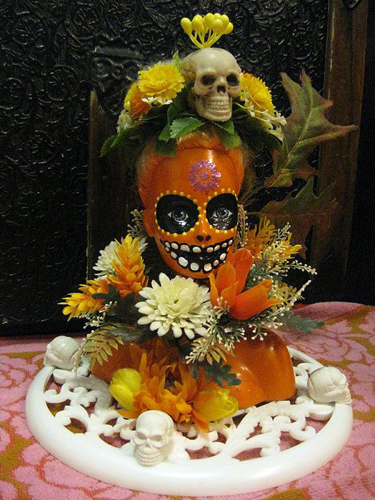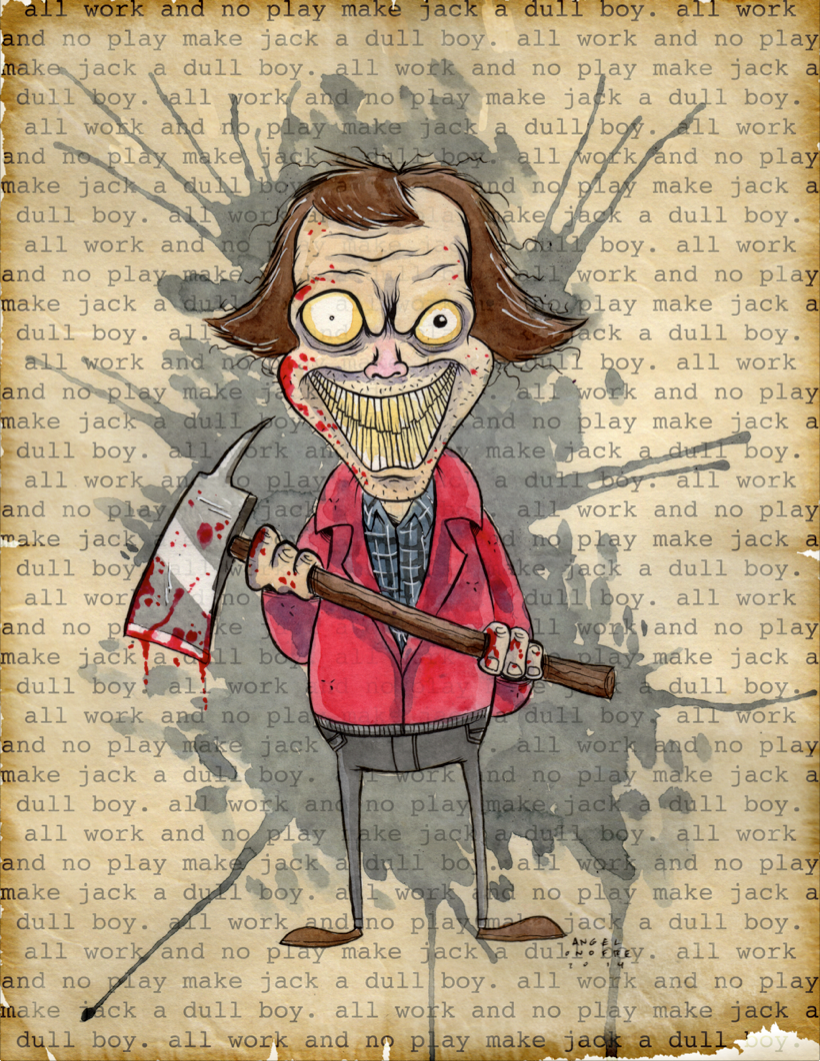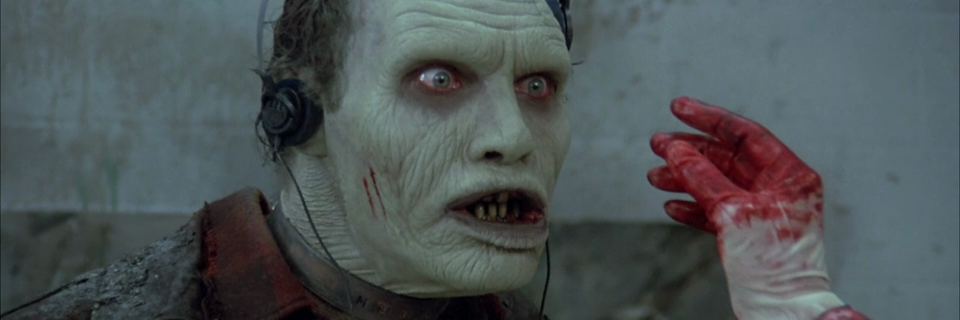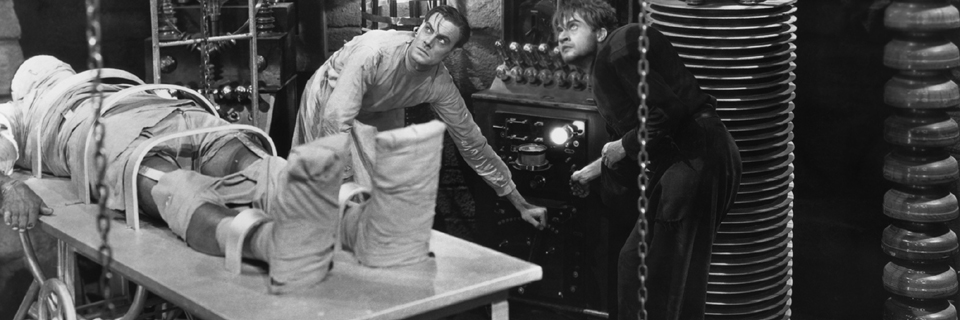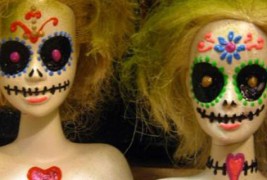
The horror genre is a big tent. It’s dark, entombed in cobwebs and inhabited by all manner of nightmarish entities, but there’s a lot of room. The people that make their bones creating works of horror—the ones who reside inside the tent—they’re an eclectic bunch. Dynamic. Still, a majority of horror creators and their fans are connected to the genre zeitgeist, and those that aren’t are at least intimately familiar with the tropes of a bygone era or a specific flavor.
Everyone we’ve covered here at Ravenous Monster has entered into this macabre circus purposefully. Horror was their desired destination and eventually it became their home. They reside here among likeminded individuals creating works to terrorize and traumatize—a unifying goal arrived at through their own unique sensibilities. It’s a bit like belonging to a club, really. The idea of a wayward traveler merely stopping in for a visit has always seemed unlikely.
Then I became aware of artist Mary Wright.
Wright is a woman whose work takes her where it must and whose focus has never been about getting into this foreboding tent with the rest of us—far from it, in fact. Her focus is aimed at the artistic journey that’s wrought unto the Madison, Wisconsin art scene incredible sculptures made from found items and repurposed junk. Lucky for us, those works have also led Wright through that black, decrepit opening and into our beloved genre as an intriguing visitor if not a permanent resident.
I caught up with Wright to discuss her process and how her artwork embodies the defining elements of horror like creepiness, discomfort, and death. Both her work and her story are fascinating. Read on, Horror Fans….
RavMon: Tell us about your Day of the Dead Barbie Heads. How did this prolific series come to be?

Mary Wright: I learned the joy of creating an art series as an art student at the UW-Madison. Several assignments involved either a series of related pieces or one piece building upon another. Also, while in college, I started doing local art shows. Preparing for a show requires creating many, many pieces. At that time I was mainly painting furniture with whimsical designs and verses. I was also making coil baskets with rope and fabric. I don’t know how many 100s of pieces I painted nor how many 100s of baskets I made during those years. I suppose that mindset is programmed pretty firmly, now. I also tend to feel that I need to keep exploring an idea until I’ve completely exhausted it, until I have no further desire to continue with it.
The Barbie Heads evolved quickly out of a silly notion I had around Halloween of 2012. I wanted to make some Day of the Dead style heads for my front yard. I was going to make them out of clay, but then, while out thrift shopping, I spotted two Barbie fashion heads on the toy shelf. Perfect. This was even better than a clay sculpture, because it was recycling cast-off toys. I eagerly rushed through those first two just for the fun of it and without much of a plan. They turned out great, and I had a blast spray painting them and ratting their hair out. I was hooked for sure. After that, I would spot abandoned Barbie heads all the time. Friends (fellow thrifters) would find them and save them for me too, which became a significant part of the entire experience. Each one found became her own, unique piece including numerous found objects (also from thrift stores or garage sales), artificial flowers, vintage jewelry and fabrics. You name it. I’ve completely lost track of how many I’ve done. Maybe 100? I still see the Barbie heads all the time—so often that I’ve put restrictions on myself about which ones I will buy based on cost and my favorite styles. I like the ones with arms the best.
Even though, initially, the use of the Barbie was accidental and done on a whim, it became deliberate and an integral to the entire concept. Barbie, the quintessential American icon of beauty and the unobtainable role model for almost every little girl in the country, myself included, is the perfect spring board for these glorified Day of the Dead-inspired skulls. The hours I spent staring at her as a child, dreaming of being like her someday. She did give me hours of happiness as a girl, along with a life-long subconscious feeling of inadequacy. You know the story. It’s unavoidable. Still, I can’t hate Barbie. It’s not really her fault. Furthermore, I cannot divorce myself from still finding her stunningly beautiful. Transforming her into a skeleton doesn’t change that. Well, maybe it does, but she’s still gorgeous. The skeleton version makes you question beauty, though, doesn’t it? Just like the skeleton under our skin is beautiful in so many ways.
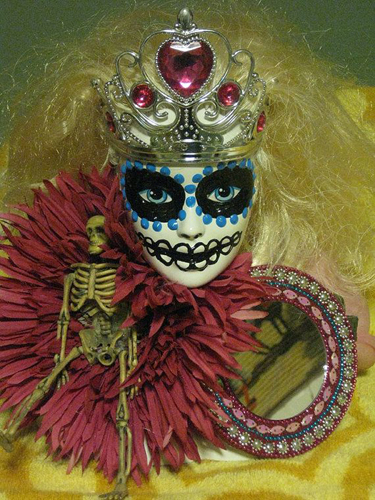
RavMon: I’m certain that you don’t consider yourself a “horror artist.” In fact, I know you’re not much of a horror fan at all, yet, much of your work is objectively creepy. That’s a fascinating dichotomy. Where does that aesthetic come from? Is it safe to say you enjoy creating spooky images and ideas, even if you don’t enjoy consuming them?
MW: I think “spooky” and “creepy” are not the same as “horror.” I like a good ghost story, but I don’t want to watch a film with graphic violence or gore in it. Being haunted by memories, regret, heartache or the mysteries of the universe is different from relishing in torture and physical pain.
Furthermore, I view the image of the skeleton differently than many, I think. It does not represent death, necessarily. To me it represents us all at our most basic level. We all have skeletons. They are a good thing. We are all skeletons, underneath. Regardless of our differences, we all look pretty much the same as skeletons. It’s our common ground.
Still, there is a sense of mortality to the skull/skeleton image. When a Day of the Dead Barbie head is staring you in the eyes (and she does), she is trying to remind you that this is where we’re headed. Life is short and beautiful. Get some perspective. Enjoy your brief days, even if they can be painful and hard sometimes. So, in that respect, my pieces are about life, not death.
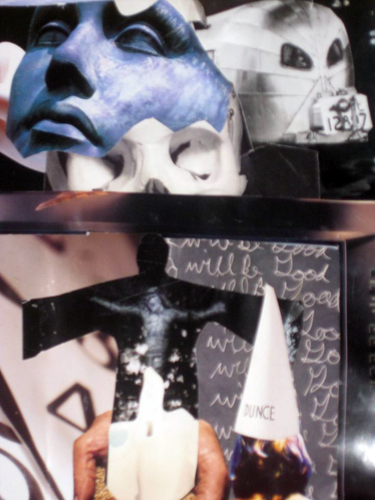
I was going through some very difficult times in my life when I started creating these. My sense of loss and helplessness was more than I could bear at times. No matter how much I wanted to avoid what was happening, I couldn’t. I just had no choice. I had to learn to live with it and experience the death of important parts of my life. So, a centipede is a centipede (I despise them), but it also represents all my fears, all my dread. No matter how much I loathe a centipede, it’s still real, it’s still there. It doesn’t care that I hate it.
So, the Barbie heads encourage the viewer to face her issues, I guess. They are pretty raw and mesmerizing. It’s hard to look away. Partly, I think, the viewer wants to figure out what the doll looked like before her transformation. The eyes of each doll look right into your soul. It is pretty creepy that a doll can evoke such feelings. It seems pretty silly, and that gives it all a comical edge, but it’s still powerful.
Regarding the image of the skeleton in particular, I suppose that evolved from a compilation of experiences. As an art student, I was exposed to ways of thinking about and viewing the human form, including the skeleton (or armature) of it. The idea of breaking the form down into its most basic parts was a significant part of Life Drawing classes. Also, I’ve been to Mexico only a couple times, but the artwork I encountered there in museums and open-air markets intrigued me immediately. I, too, cannot deny the influence of pop culture Grateful Dead images. J
RavMon: A major motif in your work is the use of baby doll heads. You’ve made lights out of them, you’ve attached them to candelabras, and you’ve made large collages from them, all of which is very creepy. In fact, baby dolls have such an inherent creep-factor that they’re regularly featured in the horror genre. What’s your inspiration to use them?
MW: I didn’t play with baby dolls much as a child, so there are no strong connections there. My interest in using the baby dolls in my art pieces goes back to my compulsive thrifting, again. As I was looking for the Barbie heads and other objects to adorn them with, I would come across lots of baby dolls, usually naked or broken in some way, and almost free. You wouldn’t believe how many baby dolls I would see in one day. The thoughts and feelings I’ve had for other second-hand items (like vintage quilts or dishes or whatever) transferred over to these dolls. I would think about the people who had owned them. These dolls were little girls’ toys. They held them and dressed them and fed them and loved them. Now, they are piled in bins, forgotten.
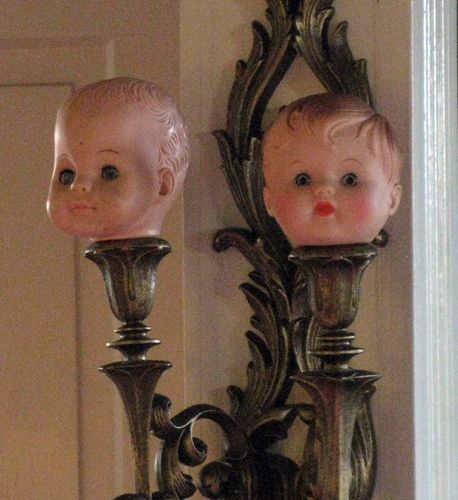
So, I started “rescuing” them, and transforming them from junk (next stop being the landfill) into art. I was remaking them and adoring them, again. It was too easy to get attached to them because each has its own expression or personality. Quickly I realized that trying to keep all of these thoughts and feelings balanced was a little spooky. Your mind plays tricks on you. There is a powerful human connection on a few levels—the fact that this toy looks like a human and that it was played with by a human as if it were a human. Yet, it’s just a factory-made, molded piece of plastic (my favorites are the vintage ones with the plastic molded hair). Taking them apart and reassembling them, challenges the viewer to reconcile this strange and comical juxtaposition.
RavMon: What’s your personal artistic philosophy or at least your general approach to your work?
MW: I don’t know if I have an artistic philosophy. I probably do, but just don’t know it. My approach changes. I have an interest in many styles of artwork and many mediums.
I have a Facebook page for my artwork. Recently, I posted this:
“I think, for me, most art comes from extreme pain and joy, all mixed together. It honors the mysterious which makes us all a little uncomfortable. That’s why it can be beautiful and creepy at the same time.”
Another time, I posted this:
“Art reminds us that there’s something bigger going on, something mysterious and mighty. It humbles us and excites us all at the same time.”
The description of that page reads like this:
“Celebrating the art of compulsive, excessive embellishment through the use of found objects, recycled pieces, and collage. Multimedia whimsy to nurture the free spirit in all of us.”
Those little blurbs might say enough.
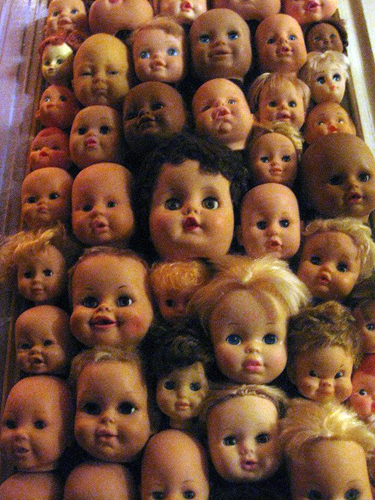
RavMon: Where did your journey as an artist begin? What was it that first inspired the young Mary Wright to express herself creatively?
MW: I had little to no art exposure as a child. The public school I attended in Illinois did not have an art program really until you reached high school. In middle school, we were taught “art” in the gym by the PE teacher. I have no memory of anything we made then. In high school, there was one art teacher who was overworked in a program that was dreadfully underfunded. It was expensive to sign up for art classes, because students had to buy all of their own supplies.
By that time, since I had had no art training, I was very intimidated to even sign up for art classes. I didn’t have enough nerve to sign up my freshman year. I somehow talked myself into it my sophomore year. The program was weak at best, but I knew no different, and I was thankful to have any art opportunity at all. From then on, I spent a lot of time in the art room in spite of recommendations and the guidance counselors and advisors who insisted that I should not be wasting my time in the art room because I needed more academics to prepare me for college.
After high school, I went to a junior college in Rockford, IL. I was trying to decide between an English major or an Art major. The first and only art class I enrolled in there was so bad, and the teacher was so arrogant and condescending, I dropped it soon after it began and declared myself an English major. That was the only college course I ever dropped.
I decided to finish my degree in Madison. I took a year off and got my residency in Wisconsin. Meanwhile, I was having second thoughts about my major again. I didn’t want to abandon art altogether. In what I consider a miraculous phone call, while talking over my options with an anonymous advisor from the UW on the phone, I somehow changed my major back to art, art education. Thank God for that spur of the moment decision.
The most significant personal artist influence in my life was my brother. He is 10 years older than I am and I admired his artistic abilities throughout my childhood. Without his work to inspire and motivate me, I’m not sure I would have had the courage to consider being an artist, myself.
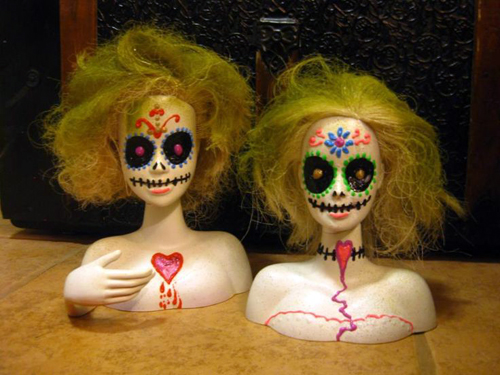
RavMon: You have a degree in Art Education and you’ve been an art teacher for almost two decades now. Is paying forward these creative outlets to children your ideal expression of your talent?
MW: I love being an art teacher. It does bring me a lot of happiness knowing I am enabling so many children to have really positive, creative, unique experiences. Working with young children helps to keep things fresh and new if I allow myself to see things through their eyes now and then.
It’s also way more work than I ever anticipated and more than others who do not teach can probably imagine. I teach 100s of students a week, and the high level of energy (even though mostly positive) can be exhausting. It’s a total sensory overload all day.
A risk of being an art teacher is that it can completely drain your creativity. So many art teachers I know are no longer artists, themselves, because there’s only so much energy and creative thought to go around. After 7 hours of motivating, demonstrating, modifying, creating, grading, displaying, planning, etc, it’s hard to go home and be an artist. With so many folks, their teaching becomes their art, I guess.
That’s always been a tough idea for me to accept, personally. You can be a math teacher without being a mathematician. You can be a reading teacher without being a linguist. But, really, can you be an art teacher without being an artist? If it’s important enough to share with 100s of students, it’s important enough to include in my life, too.
For me, it’s important that my students know I am an artist. I share my work with them. I talk with them about my ideas. We experiment with new ideas, together. I empathize with their struggles, artist to artist.
I have been teaching quite awhile. I think I am a good teacher, and I am passionate about the work I do with my students. But, I am an artist first, and that’s how I would primarily define myself. I was an artist before I was a teacher. If I am blessed to live long enough, I will still be an artist after I retire from teaching.
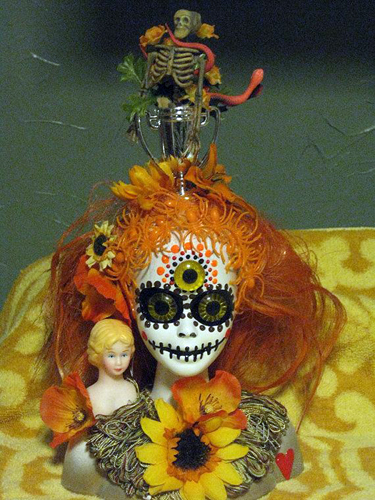
RavMon: Whose work inspires you now? What else inspires you?
MW: I have no set standard for what inspires me. Usually, whatever it is takes me by surprise. I like that. I like the idea of art taking you by surprise. Or, maybe not even art, maybe just a thing or a place or a smell in the air. I am always exploring and making discoveries. As I mentioned earlier, I thoroughly enjoy rummaging through miscellaneous objects, what others might consider junk, and pondering the significance of each piece—How does it make me feel? Why? Do I connect with it? How might it fit into a collage or diorama or whatever? How can I take what it currently is—or was—and create a work of art that would include that concept but also take it to another level, complicate it, and challenge the viewer? Vintage objects with some sentimental attachments or implications are my favorites because they remind us of days gone by forever, like walking through an old house and thinking about all the living that went on there.
RavMon: Please tell us about the pieces “Put on a Happy Face” and “Woman and Wire.” They appear to be constructed using similar media and, again, both of these pieces are disturbing and compelling.
MW: Both of these pieces are made from clay and painted with watercolor which creates a stained look. I made them when I was teaching art at the high school level, while I was sitting in the art studio with my students. I was just out of art school and a very new teacher. I don’t remember exactly what the lesson was, but it probably had to do with the human form. Oddly enough, the best part of these pieces came from a mistake. I let them dry out too long, causing the clay to be too dry to form the faces the way I had planned. It was a good lesson for the students and a good challenge for me. That’s why I made the mask for one of them (“Put On a Happy Face”) and the other one (“Woman and Wire”) has such a distant, anonymous expression. The forms of the bodies are nice, I’m happy with them, but the faces (or lack thereof) make the pieces. I guess that’s an accurate way to describe most of my artwork—it’s a process. It’s not that I don’t start out with a plan, but I’m always hoping and expecting that plan to evolve and take on an identity of its own, almost like it’s out of my control. That way, the art is teaching me something.

RavMon: Besides teaching, what are your goals as an artist going forward?
MW: As I’ve mentioned, I’ve done several art shows in the past. Just this last fall, I organized a group of local artists (myself included), and we put together a very nice art show in Madison, WI. We call ourselves the Tenderfoot Collective, and our work includes everything from sculpture to photography to oil painting to collage. It is a great group of artists. We are currently planning another Madison show for this coming summer.
Other than that, I’m just taking a day at a time. I am having a lot of fun with the dioramas I’m working on lately. That’s enough for me to be happy. A quote that I read recently has stuck with me: “How we spend our days is, of course, how we spend our lives.”—Annie Dillard.
Another one I remember from long ago: “It’s not only the way you draw and paint, but, it’s the way you live that makes you an artist.”—Tomie dePaola.
So my goal as an artist is to continue to be an artist and allow my life to be that of an artist.

RavMon: How can Ravenous Monster readers contact you and buy your work?
MW: I have a very basic website, and I have a Facebook page. I have my work in Pinterest and some things for sale on Etsy. The art show I mentioned earlier will be posted on several of those sites when the time comes. I can be contacted by email as well.
http://marygoroundart.weebly.com/
https://www.facebook.com/marygoroundart
https://www.facebook.com/tenderfootartshow
http://www.pinterest.com/marymwright/mary-go-round-mary-wright-artist/
https://www.etsy.com/shop/marygoroundart
